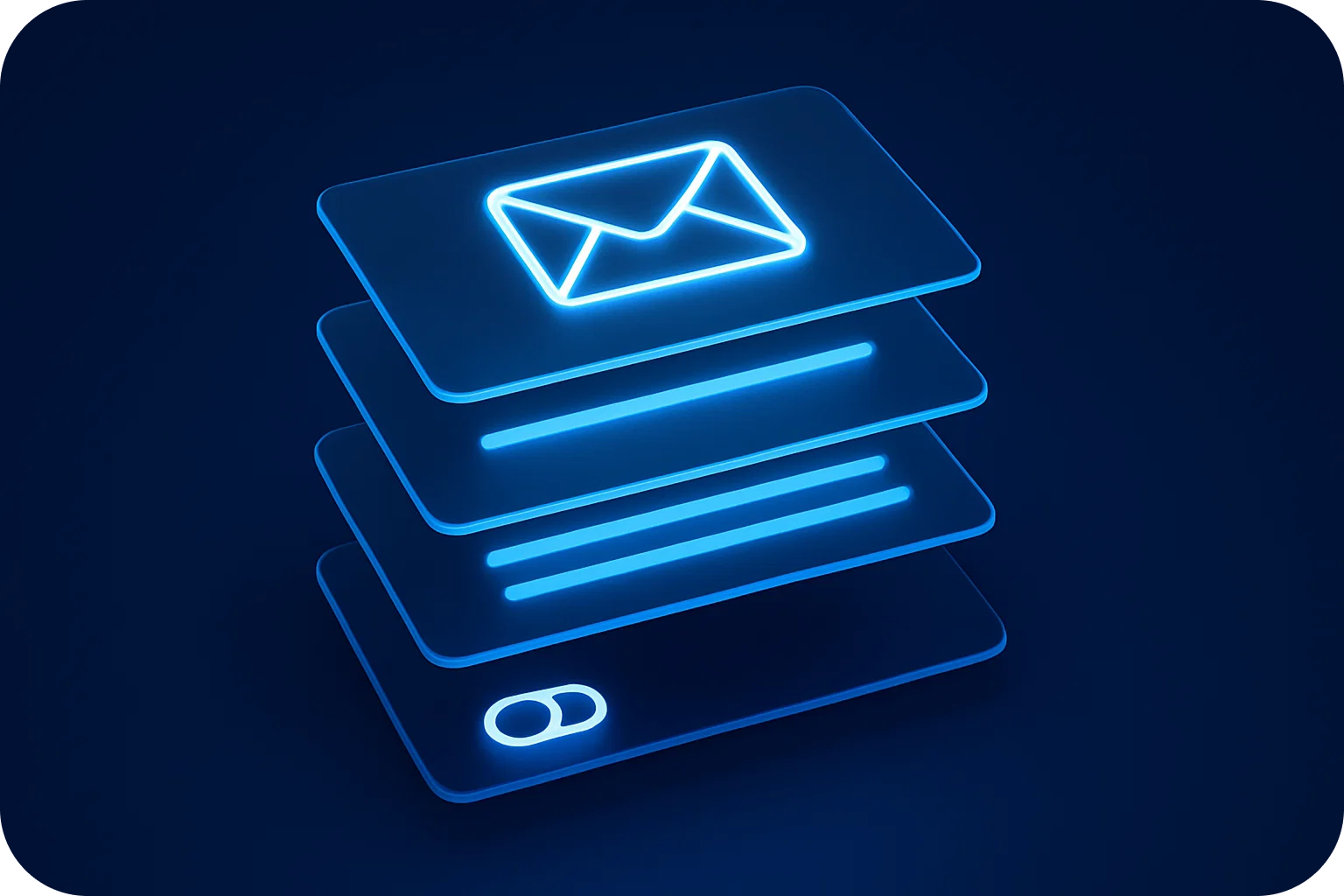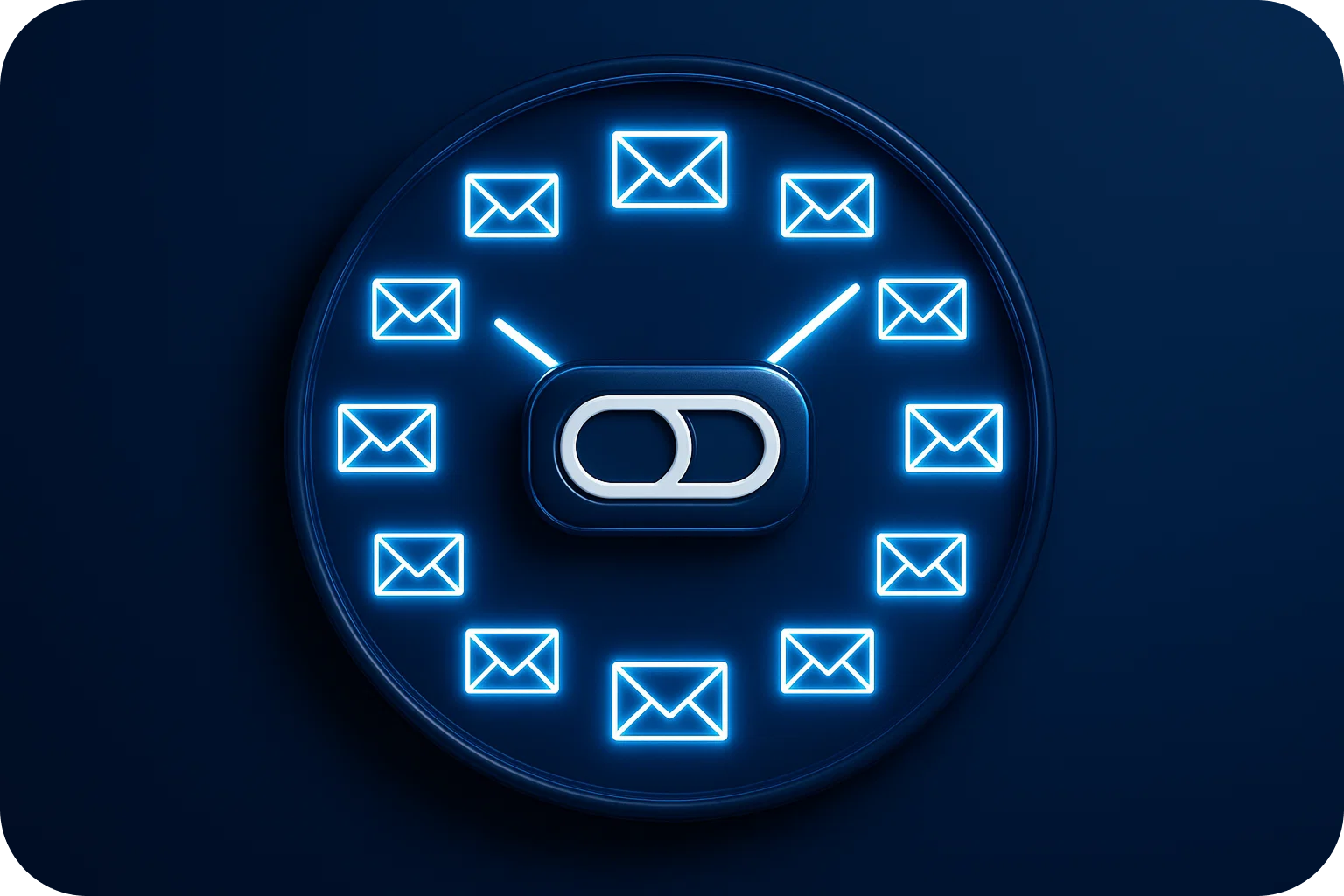The Cold Email Breakup Strategy: When to Abandon Unresponsive Prospects (And How to Do It Right)
.png)
Chasing unresponsive prospects feels like shouting into the void. You've sent multiple follow-ups, crafted personalized messages, and waited patiently for a reply that never comes. At some point, persistence crosses into pestering, and that's when it's time to deploy the breakup email.
The cold email breakup strategy isn't about giving up. It's about respecting boundaries, protecting your sender reputation, and paradoxically, often getting the response you've been waiting for. Let's explore when to walk away, how to do it gracefully, and why this approach actually works.
Why the Breakup Email Works
Before diving into timing and tactics, understand the psychology behind breakup emails. These final touchpoints work because they:
Create urgency through scarcity. When you signal you're moving on, prospects realize they're about to lose an opportunity. This triggers FOMO (fear of missing out) and prompts action.
Demonstrate respect for their time. Unlike aggressive follow-ups, breakup emails acknowledge the prospect's silence and offer an easy exit. This respectful approach often earns goodwill and responses.
Protect your sender reputation. Continuing to email unresponsive contacts damages your deliverability metrics. ISPs track engagement, and consistently low open rates signal spam behavior to email providers.
Free up mental bandwidth. Knowing when to stop prevents you from wasting resources on dead-end leads, allowing you to focus on warmer prospects.
When to Send the Breakup Email: Timing Your Exit
Email timing is critical in cold outreach. Send your breakup email too early, and you miss potential conversions. Wait too long, and you've already damaged your sender reputation and wasted valuable time.
The Optimal Follow-Up Sequence
Most effective cold email drip sequences follow this pattern:
Initial email: Day 0
First follow-up: Day 3-4
Second follow-up: Day 7-10
Third follow-up: Day 14-16
Breakup email: Day 21-25
This timeline gives prospects roughly three weeks to respond across 4-5 touchpoints. It balances persistence with respect, hitting the sweet spot before you become annoying.
Signs It's Time to Break Up
Beyond the standard timeline, watch for these signals that it's time to send your breakup email:
- Zero engagement across all touchpoints. No opens, clicks, or replies after 4-5 attempts indicates genuine disinterest or incorrect contact information.
- Opens without action. If they're opening your emails but never responding, they're aware of your outreach but not interested enough to engage.
- Bounced or invalid email addresses. Technical issues suggest you're reaching the wrong person or outdated contact information.
- Your sequence has run its course. Once you've delivered all the value propositions and angles in your drip sequence, there's nothing left to say.
Crafting the Perfect Breakup Email
The breakup email is your final impression; make it count. Here's how to structure a breakup message that preserves relationships and potentially revives dead leads.
Essential Elements of a Breakup Email
1. Acknowledge the silence respectfully
Start by recognizing you haven't heard back without placing blame or creating guilt.
Example: "I haven't heard back from you, which tells me this isn't a priority right now."
2. Offer a graceful exit
Give them permission to disengage without feeling bad about it.
Example: "I completely understand—timing isn't always right, and I don't want to clutter your inbox."
3. Leave the door open
Make it easy for them to re-engage in the future if circumstances change.
Example: "If things change down the road, feel free to reach out. I'll be here."
4. Include a final value proposition
Remind them what they're walking away from without being pushy.
Example: "Just so you know, we've helped companies like [similar company] achieve [specific result]."
5. Make unsubscribing easy
Always provide a clear way to opt out of future communications.
Example: "If you'd prefer not to hear from me again, just reply with 'not interested' and I'll remove you from my list."
Three Breakup Email Templates That Convert
Template 1: The Respectful Exit
Subject: Should I close your file?
Hi [Name],
I've reached out a few times about [value proposition], but I haven't heard back. I'm guessing it's not the right time or not the right fit.
I don't want to be that person who keeps filling up your inbox, so I'll take your silence as a "not now" and close your file on my end.
That said, if I've caught you at a bad time and you'd like to revisit this conversation later, just let me know. No pressure either way.
Best,[Your Name]
Template 2: The Permission-Based Approach
Subject: Last email, I promise
[Name],
This will be my last email—I promise.
I've sent a few messages about [specific benefit], but haven't heard back. I'm taking that as a sign you're either:
a) Buried in emails and mine got lostb) Not interested right nowc) Already working with someone else
If it's (a), reply with "timing" and I'll follow up in [timeframe].If it's (b) or (c), no worries at all—I'll stop reaching out.
Either way, I appreciate your time.
[Your Name]
Template 3: The Assumptive Close
Subject: Moving on
Hi [Name],
Since I haven't heard back, I'm assuming [solving their pain point] isn't a priority for [Company] right now.
I'll move on and stop bothering you.
But before I do—if you're even remotely curious about how [specific companies] used our solution to [specific result], let me know. Happy to share a quick case study.
Otherwise, best of luck with everything.
[Your Name]
Best Practices for Cold Email Follow-Up
Beyond the breakup email itself, follow these best practices to maximize your entire cold email follow-up strategy:
Vary your messaging. Each touchpoint should offer a different angle, value proposition, or piece of social proof. Don't just resend the same email.
Test different send times. Experiment with sending emails on different days and times to find when your prospects are most responsive.
Personalize at scale. Use merge tags and research to customize emails, but don't sacrifice volume for excessive personalization that doesn't move the needle.
Monitor your metrics. Track open rates, reply rates, and unsubscribe rates to optimize your drip sequence timing and messaging.
Segment your lists. Different prospect segments may require different follow-up cadences and breakup timing.
What Happens After the Breakup
Once you've sent your breakup email, you'll typically see one of three outcomes:
1. The response you've been waiting for. Breakup emails often generate 10-30% response rates, sometimes higher than your initial outreach. Prospects who were on the fence suddenly engage.
2. Silence continues. Most prospects still won't respond, and that's okay. You've done your due diligence and can move on with a clear conscience.
3. Unsubscribe or opt out. Some prospects will take you up on your offer to stop emailing them. Respect this immediately; it protects your sender reputation and keeps your list clean.
Protecting Your Sender Reputation
Your sender reputation determines whether your emails land in the inbox or spam folder. Continuing to email unresponsive prospects damages this reputation through:
- Low engagement rates that signal poor email quality to ISPs
- Increased spam complaints from frustrated recipients
- Higher bounce rates from outdated or incorrect addresses
- Decreased deliverability across your entire domain
The breakup email strategy protects your reputation by naturally cleaning your list and maintaining healthy engagement metrics. When you stop emailing people who don't want to hear from you, your overall engagement rates improve and so does your deliverability.
Moving Forward: Focus on Quality Over Quantity
The breakup email represents a mindset shift from quantity to quality. Rather than endlessly pursuing every lead, focus your energy on prospects who show genuine interest and engagement.
After implementing a proper breakup strategy, you'll find:
- Higher quality conversations with engaged prospects
- Better use of your time focusing on warm leads
- Improved email deliverability across all campaigns
- Cleaner contact lists that drive better metrics
- More respectful relationships that may convert later
Conclusion
Knowing when to walk away is just as important as knowing how to follow up. The cold email breakup strategy gives you a systematic approach to ending unproductive outreach sequences while maintaining professionalism and protecting your sender reputation.
Implement a clear follow-up timeline, craft respectful breakup emails, and don't be afraid to close the file on unresponsive prospects. Sometimes the best way to get a response is to stop asking for one.
Your future self and your email deliverability metrics, will thank you.
More articles
Get started now




%201.png)




.png)
